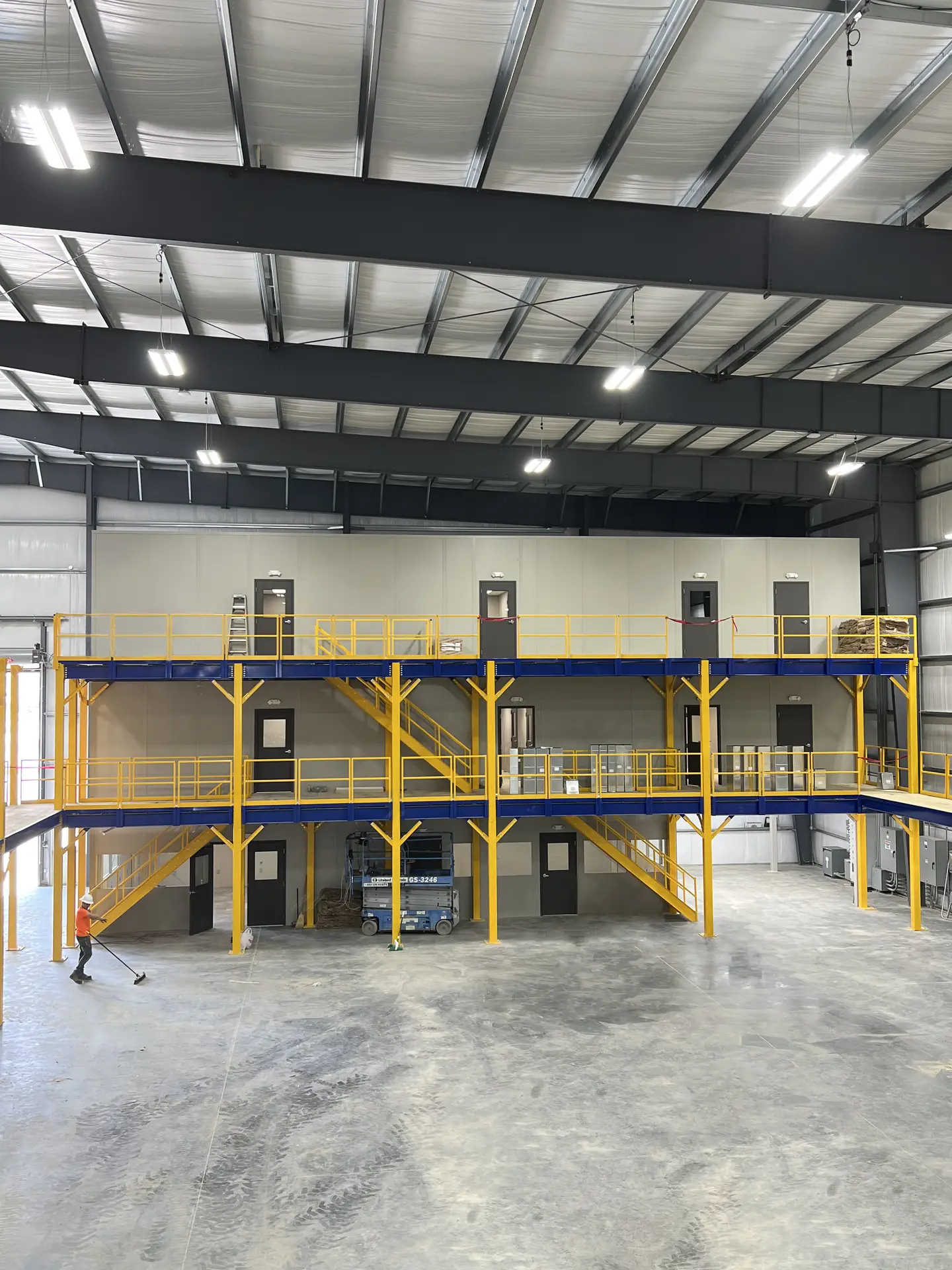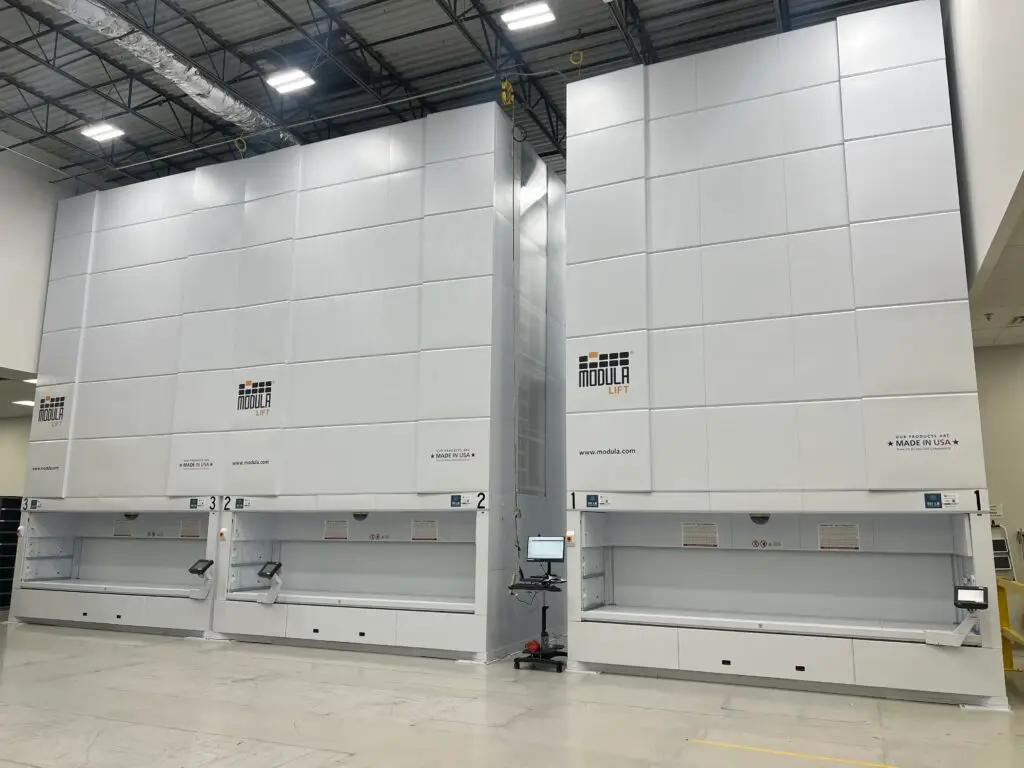
Maximizing the use of vertical space is one of the most effective ways to increase storage capacity and efficiency in your warehouse. Whether you’re working with traditional storage solutions, space-transforming additions, or cutting-edge automated systems, there’s an ideal approach to help you make the most of your warehouse height. Here, we’ll cover some of the best strategies for using vertical space, from pallet racking to advanced automated solutions.
Traditional storage systems like pallet racking and industrial shelving are staples of any well-designed warehouse. They are versatile, sturdy, and ideal for storing items of all shapes and sizes.

Remember, when expanding traditional storage systems upwards, always ensure the shelving or racks are designed for additional levels of storage and are securely anchored. In order to leverage storage at greater heights, your team must be equipped with the appropriate material handling equipment for access.
Another approach to vertical optimization is adding space transformation products to your warehouse space. These additions create a second or third level without expanding your building’s footprint, adding value to the vertical space that otherwise goes unused.

Using mezzanines or modular offices can effectively double the functional area without the need for new construction, keeping both costs and interruptions minimal.
Automated storage systems offer the most efficient use of vertical space by leveraging technology to improve access, safety, and storage density. Systems like Vertical Lift Modules (VLMs), Pallet Shuttle Systems, and Mobile Racking can take your warehouse operations to the next level.

If you’re not quite ready for a complete system upgrade, there are still simple strategies to make better use of vertical space in your warehouse:
By leveraging a combination of traditional storage solutions, transformative space options like mezzanines, and the power of automation, you can significantly boost the efficiency of your warehouse space. A well-organized, vertical storage strategy doesn’t just maximize space—it transforms your operations, increases productivity, and ultimately contributes to a safer, more efficient warehouse.
Interested in optimizing your vertical space? Contact us today to discuss the best solutions for your warehouse.
Q: How to use vertical space for storage?
A: To use vertical space effectively, evaluate your ceiling height, utilize taller pallet racking or industrial shelving, and consider mezzanines or automated systems like Vertical Lift Modules (VLMs) to maximize efficiency. Ensure proper safety measures are in place, such as guard rails and secure anchoring, and make sure your material is rated for the loads you are putting on it.
Q: What are the benefits of using vertical space for storage?
A: Utilizing vertical space helps maximize warehouse storage capacity without expanding your warehouse footprint. This can lead to increased operational efficiency, reduced clutter, better safety, and cost savings by avoiding the need for new construction.
Q: What safety measures should be taken when utilizing vertical storage?
A: Safety is critical when using vertical storage. Ensure that all racks and shelving are properly anchored, install guard rails where necessary, and train employees on how to safely access higher storage levels. Additionally, using equipment like forklifts and lifts designed for vertical access can help minimize risks.
Q: How can I start optimizing my warehouse for vertical storage?
A: Start by assessing your current storage setup and ceiling height. Identify areas where additional levels could be added, and consider which type of storage solution (traditional, mezzanine, or automated) best fits your needs. Partnering with a storage solutions provider, like Prestige, can help you create a tailored plan that optimizes your vertical space effectively.
Explore our projects, offerings, and company / industry news
Free shipping is available for online orders shipped to facilities within a 25-mile radius of Chattanooga, TN.